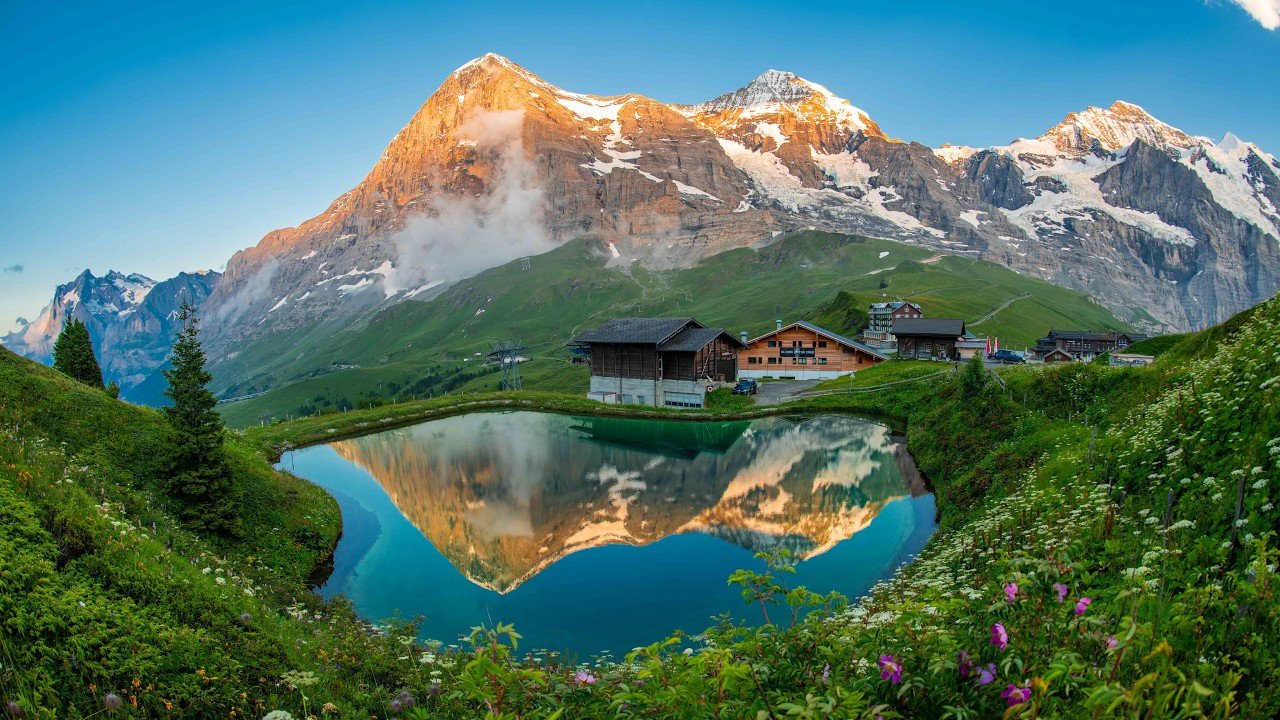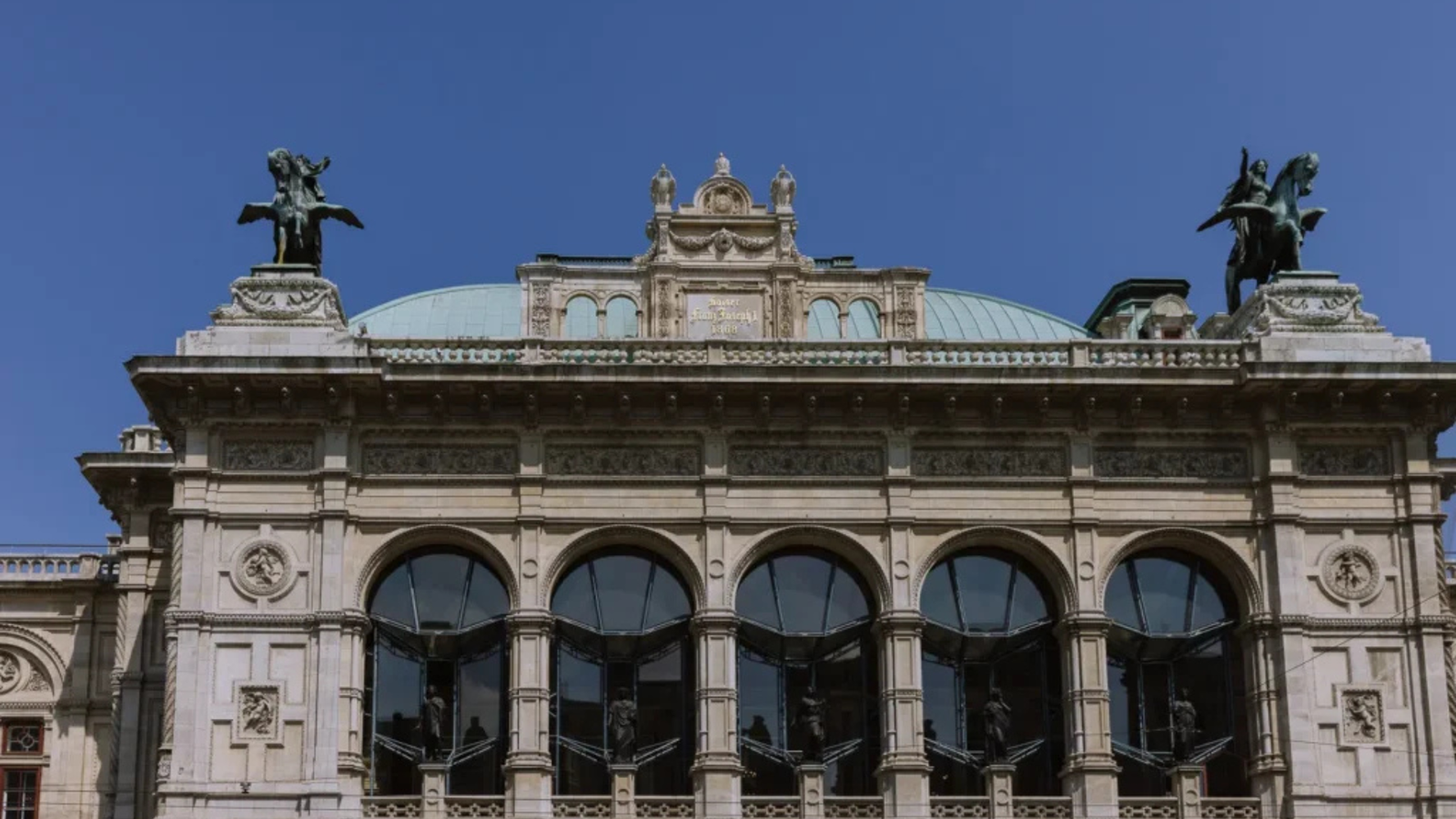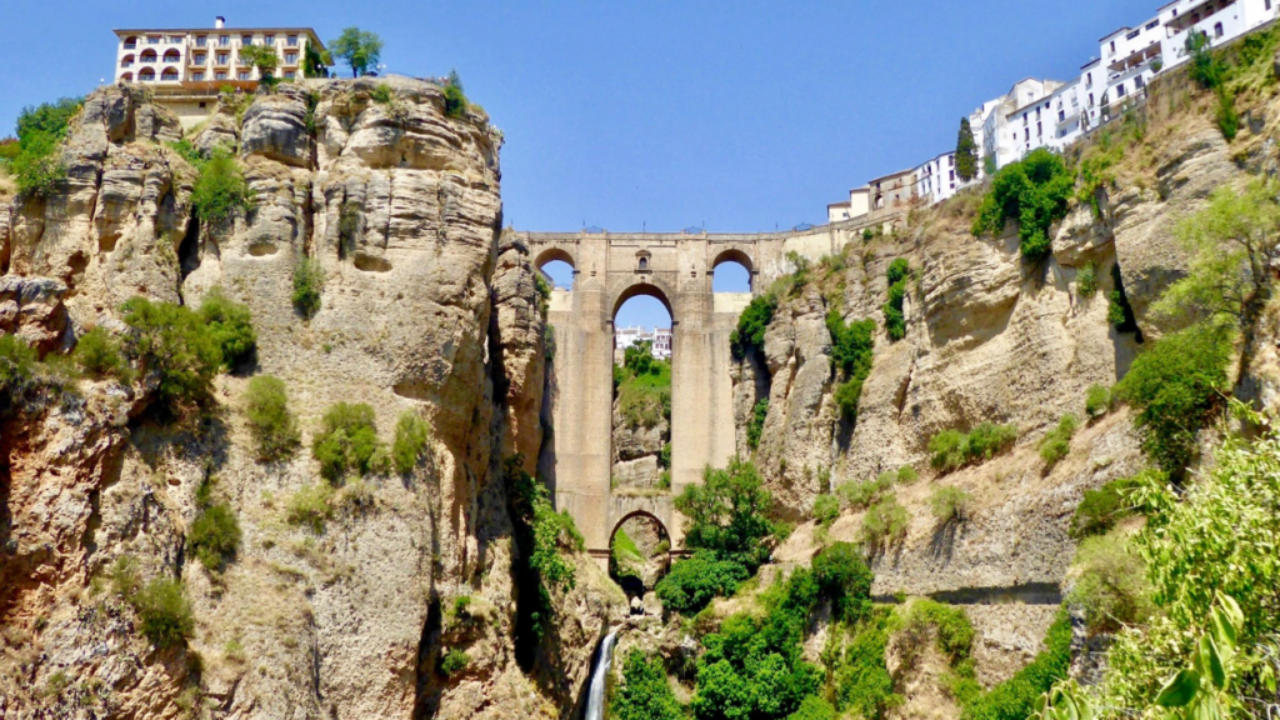Why Córdoba Is Perfect for a Weekend Getaway
Córdoba’s compact historic center, pedestrian-friendly streets, and wealth of attractions make it an excellent choice for a short escape. As the former capital of the Islamic Caliphate in Al-Andalus, the city boasts a unique cultural tapestry reflected in its architecture, cuisine, and traditions. The Mezquita-Catedral, a mosque-cathedral hybrid, is a global architectural marvel, while the Alcázar’s lush gardens and the Jewish Quarter’s winding alleys offer endless opportunities for discovery. With high-speed AVE trains connecting Córdoba to Seville (45 minutes), Madrid (2 hours), and Málaga (1 hour), it’s easily accessible from major Spanish cities. The city’s relaxed atmosphere, affordable dining, and vibrant plazas provide an authentic Andalusian experience without the hustle and bustle of larger destinations like Seville or Granada.
Day 1: Discovering Córdoba’s Historic Core
Morning: Mezquita-Catedral and Patio de los Naranjos
Kick off your weekend at the Mezquita-Catedral (Mosque-Cathedral), Córdoba’s crown jewel and a UNESCO World Heritage Site. This architectural masterpiece, begun in 785 CE by Emir Abd ar-Rahman I, is famous for its forest of 856 red-and-white striped arches, a testament to its Islamic origins, later transformed into a cathedral in 1236. Arrive early for free entry between 8:30–9:30 AM (except Sundays) or purchase tickets online (€13) to avoid queues. Spend 1–1.5 hours exploring the hypostyle hall, the ornate mihrab, and the Renaissance nave, marveling at the intricate mosaics and soaring ceilings.
Before entering, take a moment to wander through the Patio de los Naranjos, a tranquil courtyard filled with orange trees and fountains, perfect for photos. For a panoramic view of Córdoba’s rooftops, climb the bell tower (formerly the minaret) for an additional €2. The climb is steep but rewarding, offering a stunning perspective of the city.
Tip: Wear comfortable shoes for the uneven stone floors, and bring a light scarf to cover shoulders as a sign of respect in the cathedral.
Late Morning: Jewish Quarter and Calleja de las Flores
From the Mezquita, step into the Jewish Quarter (La Judería), a labyrinth of narrow, whitewashed streets just west of the mosque. This medieval neighborhood is a highlight of Córdoba, with its flower-laden patios, artisan shops, and historic charm. Stroll down the Calleja de las Flores, a narrow alley adorned with colorful flowerpots, offering a postcard-perfect view of the Mezquita’s bell tower. Spend about 45 minutes wandering, browsing shops like Artesanía Los Patios for handcrafted ceramics, or picking up leather goods and jewelry.
Visit the Synagogue of Córdoba (free entry, closed Mondays), one of only three medieval synagogues remaining in Spain, known for its exquisite Mudejar stucco work. Nearby, the Casa de Sefarad (€4) provides a fascinating look at Sephardic Jewish culture through exhibits on music, literature, and daily life. Both are compact, making them ideal for a quick yet enriching stop.
Lunch: Savoring Cordoban Cuisine
For lunch, head to Casa Pepe de la Judería, a beloved restaurant in the Jewish Quarter known for its authentic Andalusian fare. Indulge in salmorejo, a creamy tomato-and-bread soup topped with jamón ibérico and boiled egg, or try rabo de toro, a rich oxtail stew slow-cooked to perfection. Pair your meal with a glass of Montilla-Moriles, a local fortified wine similar to sherry. Expect to spend €15–25 per person. For a more historic ambiance, Bodegas Campos, a tavern adorned with bullfighting memorabilia, offers similar dishes in a charming setting. Reservations are recommended, especially on weekends.
Afternoon: Alcázar de los Reyes Cristianos
After lunch, walk 5 minutes to the Alcázar de los Reyes Cristianos (€4.50), a 14th-century fortress-palace built by King Alfonso XI. This historic site, once home to Catholic Monarchs Ferdinand and Isabella, played a pivotal role in the Reconquista and was where Christopher Columbus pitched his voyage to the Americas in 1486. Explore the Roman mosaics, climb the towers for sweeping city views, and wander the stunning gardens filled with fountains, orange trees, and manicured hedges. Allow 1 hour for the visit. For deeper historical context, consider a guided tour (€25), which covers the Alcázar’s role in Córdoba’s history.
Late Afternoon: Roman Bridge and Calahorra Tower
Next, cross the Roman Bridge, a 1st-century BCE structure spanning the Guadalquivir River. With its 16 arches, this iconic bridge, featured in Game of Thrones as the Long Bridge of Volantis, offers breathtaking views of the Mezquita and Córdoba’s skyline. A 20-minute stroll across the bridge is both scenic and relaxing. At the southern end, visit the Calahorra Tower (€4.50), a 12th-century defensive structure housing a museum on Córdoba’s multicultural history. The tower’s exhibits, including miniature models of 10th-century Córdoba, provide a glimpse into the city’s Islamic past. The visit takes about 30 minutes.
Evening: Dinner and Flamenco Show
For dinner, head to Restaurante Tellus in Plaza de San Miguel, a modern eatery with air-conditioned comfort and a menu showcasing local ingredients. Try dishes like partridge pate or flamenquín cordobés, a breaded pork roll stuffed with ham, for €20–30 per person. The outdoor terrace is perfect for enjoying the evening breeze.
End your first day with a flamenco show at Tablao El Cardenal (€23, includes a drink), located near the Mezquita. This intimate venue offers an authentic experience with passionate guitar, singing, and dance, capturing the soul of Andalusia. Shows start at 8:30 PM and last about 1 hour. Book tickets online to secure your spot, as this popular venue fills up quickly.
Where to Stay: Check into Hospes Palacio del Bailío, a 5-star hotel in a 16th-century palace with a pool, spa, and Michelin-starred dining. Rates start at €150/night. For a budget-friendly option, NH Collection Amistad Córdoba offers 4-star comfort in the Jewish Quarter with a pool for €80–120/night. Both are within a 20-minute walk of the train station and major attractions.
Day 2: Patios, Palaces, and a Glimpse of the Caliphate
Morning: Patios de San Basilio and Palacio de Viana
Start your second day with a visit to the Patios de San Basilio, a collection of traditional Cordoban courtyards in the San Basilio neighborhood, a 10-minute walk from the Alcázar. These communal spaces, rooted in Roman and Moorish traditions, are adorned with vibrant flowers, colorful tiles, and bubbling fountains, earning UNESCO Intangible Cultural Heritage status. Join a guided tour (€6–10) at 10 AM to visit private patios and learn about their cultural significance. The tour lasts 1 hour. If visiting in May, don’t miss the Fiesta de los Patios, when hundreds of courtyards open to the public for free.
Next, head to the Palacio de Viana (€8, closed Mondays), a 15-minute walk from San Basilio. Known as the “Museum of Courtyards,” this 15th-century palace boasts 12 exquisite patios filled with orange trees, roses, and cypresses, alongside art collections and historic interiors. Allow 1–1.5 hours for a self-guided visit or opt for a guided tour (€12) to explore the palace’s aristocratic history. The patios’ serene beauty makes this a highlight for photographers.
Lunch: Plaza de la Corredera
For lunch, visit Plaza de la Corredera, Córdoba’s largest square, a 10-minute walk from Palacio de Viana. This lively plaza, once a Roman circus and later a bullring, now hosts bustling cafes and tapas bars. Dine at Taberna La Viuda, known for its churrasco cordobés (grilled pork with chimichurri) and refreshing tinto de verano (red wine with lemon soda). Meals cost €15–25 per person. The plaza’s vibrant atmosphere is perfect for people-watching and soaking in local life.
Afternoon: Medina Azahara
In the afternoon, embark on a half-day trip to Medina Azahara (€2.50 entry, closed Mondays), a 10th-century palatial city 8 km west of Córdoba. Built by Caliph Abd ar-Rahman III as the administrative capital of Al-Andalus, this UNESCO World Heritage Site features ruins of palaces, mosques, and gardens, showcasing the Caliphate’s opulence. Explore the Grand Portico and Salon Rico, then visit the on-site museum for artifacts and 3D reconstructions. Take a shuttle bus (€9 round-trip) from the Alcázar at 11 AM, returning by 4:30 PM. The visit takes 2–3 hours. Book tickets online to avoid queues.
Alternative: If you prefer to stay in the city, visit the Baños de Alcázar Califal (€3), 10th-century Arab baths near the Alcázar, or indulge in a Moorish-style spa experience at Hammam Al Ándalus (€39 for a bath, €59 with massage). Both offer a relaxing glimpse into Córdoba’s Islamic past.
Late Afternoon: Roman Temple and Souvenir Shopping
Return to Córdoba by 4:30 PM and visit the Roman Temple (free entry), a 1st-century structure near Plaza de las Tendillas. Its 10 Corinthian columns are a striking reminder of Córdoba’s Roman heritage. Spend 15–20 minutes here, perfect for a quick stop.
Use the remaining time to shop for souvenirs in the Jewish Quarter. Pick up Montilla-Moriles wine, extra virgin olive oil, or handcrafted ceramics at Mercado Victoria, a gourmet food market 10 minutes from the temple. For unique gifts, visit Zoco Artesanal for leather goods, jewelry, or Mudejar-style tiles.
Evening: Dinner and Sunset Stroll
For your final dinner, dine at La Cittadella Osteria, a cozy restaurant near the Alcázar offering Italian-Mauritian fusion cuisine. Try their seafood pasta or berenjenas fritas con miel (fried eggplant with honey) for €20–30 per person. The warm ambiance and creative menu make it a memorable farewell to Córdoba.
End your weekend with a sunset stroll along the Roman Bridge, where the Mezquita glows against the twilight sky. Stop at a riverside bar like Bar La Mezquita for a nightcap of fino sherry or a coffee, reflecting on your Cordoban adventure.
Practical Tips for Your Córdoba Weekend
Getting to Córdoba
- Train: High-speed AVE trains connect Córdoba to Seville (45 min, €15–30), Madrid (2 hr, €30–60), and Málaga (1 hr, €20–40). Book via Renfe or Omio. The station is a 20-minute walk or 6-minute taxi (€6) from the historic center.
- Car: Rent a car for €20/day to visit Medina Azahara independently. Park at hotels with on-site parking, like NH Collection Amistad.
- Bus: Budget buses from Seville or Málaga take 2–3 hours (€8–15). Check ALSA for schedules.
Getting Around
Córdoba’s historic center is compact and walkable, with most attractions within a 15-minute radius. Use local buses (€1.30) for longer distances, such as to the train station. Google Maps provides accurate bus routes. Horse-drawn carriage rides (€45 for 45 min) offer a scenic tour of the old town, ideal for a romantic touch.
Best Time to Visit
Plan your trip for April–May or September–October for pleasant weather (20–30°C) and events like the Fiesta de los Patios (May). Avoid July–August, when temperatures can soar to 40°C. June 2025 offers clear skies and moderate crowds, perfect for a weekend visit.
Budget Tips
- Free Entry: Visit the Mezquita-Catedral for free 8:30–9:30 AM (except Sundays). The Roman Temple and Synagogue are always free.
- Dining: Share tapas to save money. Look for menú del día (lunch specials) for €10–15.
- Tickets: Book Mezquita, Alcázar, and Medina Azahara tickets online for discounts and to skip lines.
Where to Stay
- Luxury: Hospes Palacio del Bailío (€150–250/night) offers historic elegance with a pool and spa.
- Mid-Range: NH Collection Amistad Córdoba (€80–120/night) provides 4-star comfort in the Jewish Quarter.
- Budget: Hotel Boutique Caireles (€60–80/night) opposite the Mezquita offers modern rooms at a great value.
Safety and Etiquette
Córdoba is safe, but stay vigilant for pickpockets in crowded areas like the Jewish Quarter. Dress respectfully at religious sites, covering shoulders and knees. Tip 5–10% at restaurants if service isn’t included. Learn basic Spanish phrases like “gracias” (thank you) to enhance interactions with locals.
Why This Itinerary Works
This 2-day itinerary is carefully designed to maximize your time in Córdoba, balancing must-see landmarks with opportunities to savor the city’s unique atmosphere. Day 1 immerses you in the historic core, from the Mezquita-Catedral’s iconic arches to the Alcázar’s tranquil gardens, culminating in an authentic flamenco experience. Day 2 explores Córdoba’s cultural traditions through its patios and palaces, with a trip to Medina Azahara offering a glimpse into the Caliphate’s grandeur. The schedule allows ample time for al fresco dining, souvenir shopping, and leisurely strolls, ensuring a well-rounded weekend. Flexible alternatives cater to different interests, whether you prefer spa relaxation or historical deep dives.
Conclusion
Córdoba is a city where history and beauty intertwine, offering a perfect weekend escape in 2025. This 2-day itinerary guides you through the Mezquita-Catedral’s mesmerizing arches, the Jewish Quarter’s charming alleys, and the Alcázar’s lush gardens, with a journey to the ancient ruins of Medina Azahara. From savoring salmorejo in vibrant plazas to experiencing the passion of flamenco, every moment in Córdoba is a celebration of Andalusian culture. Pack your walking shoes, book your train tickets, and prepare to uncover the magic of one of Spain’s most enchanting cities. Your perfect Córdoba weekend awaits!




